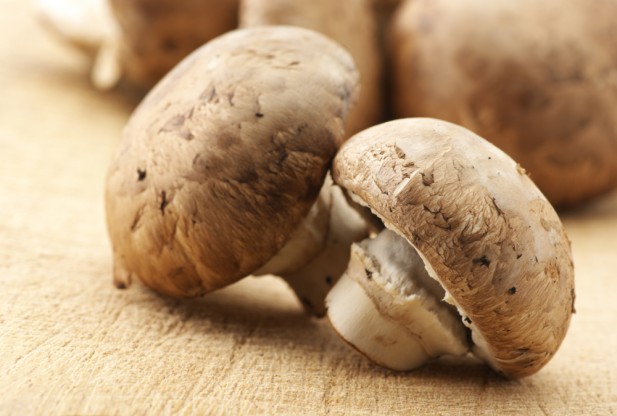
April Flowers for redOrbit.com – Your Universe Online
Occupying a prominent place in our diet and grocery stores, the button mushroom boasts a multibillion-dollar niche. In nature, the same mushroom, Agaricus bisporus, is known to decay leaf matter on the forest floor. A new study, led by the French National Institute for Agricultural Research (INRA) and the U.S. Department of Energy Joint Genome Institute (DOE JGI), has determined the complete gene sequence of A. bisporus.
Published online in the Proceedings of the National Academy of Sciences, the new study shows that the mushroom’s genes are deployed not only in leaf decay, but wood decay and the development of fruiting bodies. It also suggests the major implications such processes have for forest carbon management.
“Our hypothesis was that metabolic strategies and niche adaptations of Agaricus might not be present in the white-rot and brown-rot wood-decomposing fungi,” said Francis Martin, Head of the ‘ARBRE’ Lab of Excellence at INRA, Nancy, France.
“Compared to genomes of these fungi, that we previously characterized, the Agaricus genome surprisingly has shown many similarities in gene composition,” added Igor Grigoriev, leader of the DOE JGI Fungal Program. “At the same time, our data also supported the view that Agaricus fits neither brown-rot nor white-rot classifications and that its adaptation to growing in a leaf-litter humic-rich environment is not typical of classic wood-degrading fungi.”
“Humus” is an ancient Roman designation for soil and compost, which is the complex natural interaction of organic compounds from plant wall residues. The chemicals from humus drive the decomposition process using substances like humic acid. Humic acid serves as a complement to fertilizer, adding organic matter to deficient soils, contributing to overall plant health to foster root vitality and stimulating the growth of beneficial microbial communities in the soil.
The authors consider A. bisporus as an ideal mushroom to study for adaptation and growth in humic-rich environments. Using two different A. bisporus lines – one wild and one commercially grown – the team surveyed the genomes and the transcriptomes, the subset of genes expressed under particular conditions. Several families of sugar-degrading enzymes similar to those found in wood-decaying fungi were found. However, a higher ability to metabolize complex mixtures of derivatives of lignin and other polymers was suggested by the enzymes in Agaricus such as heme-thiolate peroxidases and etherases which are predominate in the presence of humus-rich soil habitats.
“The ability to use proteins prevalent in soil confers an advantage to Agaricus over other fungal scavengers,” said Martin. “To our knowledge, Agaricus had not been shown in nature to decompose wood,” said Martin. “Yet, we now see how Agaricus has adapted to growing in this ecological niche. Our understanding of the carbon cycling role of Agaricus in ecosystems is a prerequisite to modeling and optimizing carbon management for sustainable forests.”
A. bisporus is a poor competitor on fresh non-degraded plant wastes, unlike brown-rot and white-rot fungi. It does well on partially decomposed litter on forest floors and grassland soils rich in humic substrates. A dozen other genes that are dialed up during mushroom formation were revealed in the analysis.
“Key master switches may be manipulated to control fruiting body formation—the mechanisms triggering the complex cascade that leads from undifferentiated mycelia, the mass of branching, thread-like fingers, to the button mushrooms most commonly consumed” said Martin.
“Comparative genomics of fungi just got more interesting because the contributions of Emmanuelle Morin at INRA and the 42 co-authors, many of them at the JGI, that led to analysis of the Agaricus genome,” said John Taylor, Professor of Plant and Microbial Biology at the University of California, Berkeley and member of the DOE JGI Fungal Advisory Committee.
“The most exciting discovery may be the expansion of these heme-thiolate peroxidases, the versatile catalysts that have an important industrial applications and seemingly allow Agaricus to live in humus, the lignin-rich residue of plants that pervade compost.”
Some of the industrial applications possible include the breakdown of lignin-derived compounds in novel biorefineries to obtain novel high value chemicals.
Taylor said, “If the peroxidases do degrade humus, there could be serious effects on the sequestration of soil carbon as soil warms,” concerning the implications of the findings as applied to climate trends.
By making the gene map of A. bisporus publicly available, additional value will be accrued, according to Martin. Identifying pathogen resistance traits and highlighting wild germplasm collections will benefit the multi-billion dollar industry producing the button mushroom.
“The genome sequence will expedite mushroom breeding for improved agronomic characteristics,” he said.
























